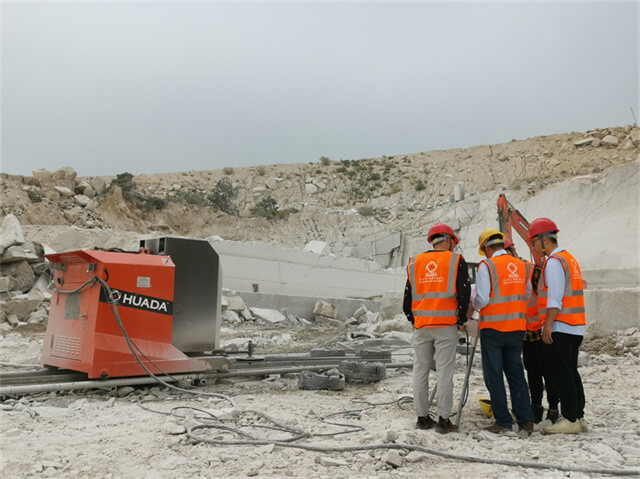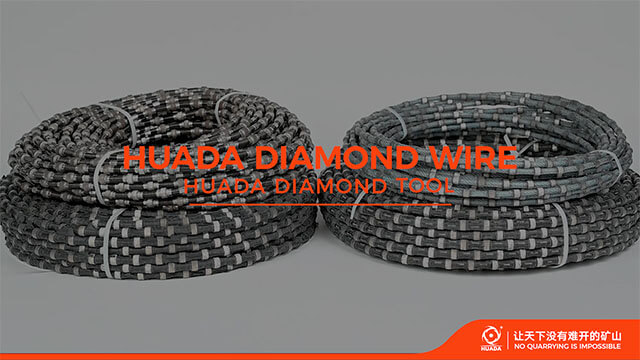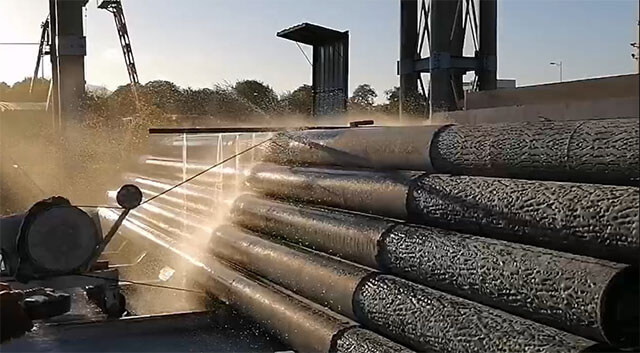Author:Huada Quarrying Machine FROM:Stone quarry machine manufacturer TIME:2024-10-22
Calibrating a wire saw machine for precise cutting is essential in industries that require high accuracy, such as stone, metal, and concrete processing. A well-calibrated wire saw machine ensures optimal performance, reduces material waste, and enhances the quality of the finished product. This article will guide you through the steps necessary for effective calibration, discussing the importance of each step and providing practical tips for achieving the best results.
The wire saw machine operates using a thin wire equipped with diamond segments. This design allows for efficient cutting through various materials with minimal kerf loss. Understanding the components of the machine, including the drive system, tensioning mechanism, and tracking system, is fundamental to effective calibration. Each part plays a crucial role in ensuring the wire runs smoothly, maintains proper tension, and cuts accurately.
Before beginning the calibration process, it is important to gather all necessary tools and equipment. Commonly required items include a tension gauge, alignment tools, and measuring devices such as calipers or laser systems. Additionally, ensure that the machine is clean and free from debris that could interfere with the calibration process. This preparation sets the stage for an efficient calibration procedure.
One of the first steps in calibrating a wire saw machine is checking the wire tension. Proper tension is crucial for achieving accurate cuts and prolonging the life of the wire. Use a tension gauge to measure the current tension of the wire. If the tension is too low, the wire may sag and produce inaccurate cuts. Conversely, excessive tension can lead to premature wear or breakage. Adjust the tension according to the manufacturer’s specifications for optimal performance.
After adjusting the tension, the next step is to ensure that the wire is properly aligned. Misalignment can cause uneven cutting and increased wear on the wire. Start by visually inspecting the wire’s path. It should run parallel to the intended cutting line. Use alignment tools to adjust the pulleys and guides if necessary. A laser alignment system can also be beneficial for achieving precise alignment. Regular checks and adjustments help maintain accuracy over time.

The cutting speed of the wire saw is another critical factor affecting precision. The speed must match the material being cut and the type of wire used. Refer to the manufacturer’s guidelines for recommended cutting speeds based on specific materials. Experimentation may be required to find the ideal speed that balances cutting efficiency with the quality of the cut. Too fast a speed can lead to overheating and damage, while too slow a speed may result in unnecessary delays and inefficiencies.

Depth of cut settings are crucial, especially when working with materials of varying thicknesses. The depth should be set to ensure that the wire penetrates the material adequately without excessive force. This not only preserves the integrity of the material but also reduces wear on the wire itself. Use calipers or measuring tools to set the depth accurately, and make adjustments as needed based on the specific project requirements.
Once calibration is complete, it is vital to monitor the machine's performance during operation. Regular inspections can help identify any issues early, such as abnormal vibrations or changes in cutting quality. Keep a log of performance metrics, including cutting speed, wire wear, and tension levels. This data will be invaluable for future calibrations and can help in troubleshooting problems before they escalate.
Calibration is not a one-time task; it requires routine maintenance and checks. Establish a schedule for regular calibration and maintenance to ensure consistent performance. Factors such as environmental conditions and material variations can influence the machine's settings over time. By performing periodic calibrations and maintenance, you can extend the lifespan of your wire saw machine and maintain its cutting precision.

Calibrating a wire saw machine is essential for achieving precise cuts and maintaining high production standards. By understanding the components and processes involved, you can ensure that your machine operates at peak efficiency. Regular monitoring, maintenance, and calibration checks are crucial for long-term performance. Investing time and resources into proper calibration not only improves cutting accuracy but also enhances overall productivity and reduces costs associated with material waste and machine downtime.